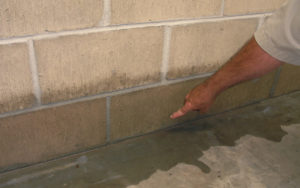Best Basement Waterproofing for Beginners
Best Basement Waterproofing for Beginners
Blog Article
Top Guidelines Of Best Basement Waterproofing
Table of ContentsAbout Best Basement WaterproofingThe Best Guide To Best Basement WaterproofingGetting My Best Basement Waterproofing To WorkThe Ultimate Guide To Best Basement WaterproofingThe Basic Principles Of Best Basement Waterproofing
usages excavation strategies toward the bottom of the framework's structure. involves eliminating dampness after it has gone into the cellar. AdvantaClean's skilled professionals and service technicians will certainly locate the water source. If wall or piece splits exist, we will inject polyurethane and epoxies right into the splits and seal the concession, avoiding additional wetness from getting in.Proper rating around the home to direct dampness far from the structure. Putting up, fixing, or cleaning gutters and downspouts. Inside or external waterproofing with filler, sealer, and/or water-proof paint. Mounting cellar air flow systems, conditioning systems, or cellar dehumidifier systems to obtain water out of your basement. Choosing AdvantaClean's basement waterproofing solutions is a reliable means to deal with wetness and stop mold from jeopardizing the structure of your home and the health and wellness of your household.
If there's condensation on the exterior of the aluminum foil, you have high moisture in your cellar. If the foil has condensation on the within surface area (next to the wall surface), the dirt around your home may be normally damp from a high water table or bad soil drainage.
You can waterproof simply your interior wall surfaces, which might address the trouble. Once they dry out, they stick completely to concrete and stonework wall surfaces.
What Does Best Basement Waterproofing Do?
Concrete waterproof finishes can not be used to previously painted surfaces; inspect the tag. Known as densifiers, they are appropriate only for wall surfaces that have not been repainted or sealed.
You clean, roll, or spray it on much more heavily one gallon covers simply 75 square feet, not the 300 square feet normal with conventional paint. Water-proof paint is fine for DIY application. You can apply it over repainted surface areas, and paint over it once it's treated (one gallon costs $37).
It can cost $10,000 to $15,000, depending on the job required. Outside waterproofing entails digging deep into throughout your house to the complete deepness of the structure wall surfaces, then installing a water-proof covering or membrane covered by drain panels. The panels offer an easy course for water to stream down to an external French drain at the end of your structure.
9 Simple Techniques For Best Basement Waterproofing
A cellar without waterproofing is kind of like that. Your basement does not desire to go via a rainstorm without correct security simply as much as you don't desire to.
Outside waterproofing is a waterproofing method that involves sealing your home from the outside. It's kind of like a moat around a castle. It involves digging a trench around your whole residence to the foundation (regarding 8 to 10 feet down). The foundation walls are then cleansed, secured, and covered with a water-proof membrane layer or sealant.

Unknown Facts About Best Basement Waterproofing
It's a much more engaged process that requires digging up your backyard, which is pricey and taxing. Exterior waterproofing includes getting rid of whatever bordering the residence, including verandas, driveways, sidewalks, landscaping, air conditioning systems, decks, and so on. If any one of the work was done improperly and water is still entering your cellar, there isn't much you can do to fix or repair it.
Interior cellar waterproofing includes waterproofing you can look here from the within. Any water that leakages into your cellar is rerouted prior to it touches your floor.
It's a reliable technique to water resistant your basement. The disadvantage of indoor basement waterproofing mainly pertains to the installation procedure. This approach calls for stored products, furniture, and built-in shelving or cabinets to be moved from touching the cellar walls. And during setup, your cellar can not be used. The greatest distinction between the 2 methods is this: Exterior waterproofing is a preventative service and indoor waterproofing is a corrective service.
Best Basement Waterproofing Can Be Fun For Everyone
To conclude, exterior and indoor cellar waterproofing are both effective techniques of shielding your home from water damage. Exterior waterproofing creates a barrier that prevents water from entering your home, while indoor waterproofing redirects water that does enter your home. And it is very important to keep in mind that exterior waterproofing is a pricey and disruptive setup process when contrasted to interior waterproofing.
Whichever approach you choose, article source make certain you choose a trusted and reliable professional for the work. If you have any type of questions regarding basement waterproofing, please get to out to us.
You can complete our type below. Best Basement Waterproofing, begin a conversation in the bottom right-hand corner, or call us here at 1-800-827-0702
Report this page